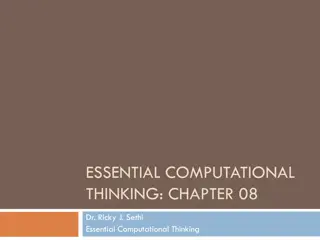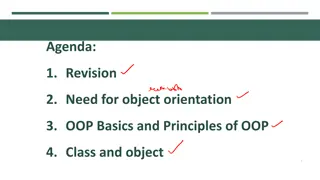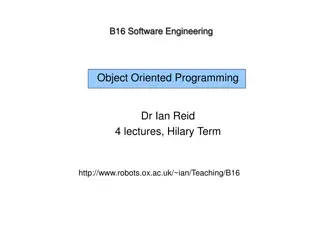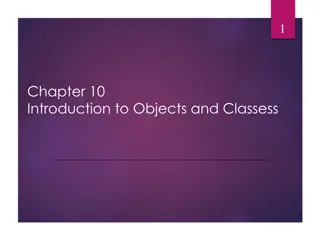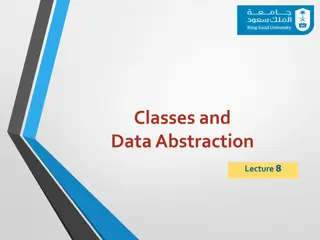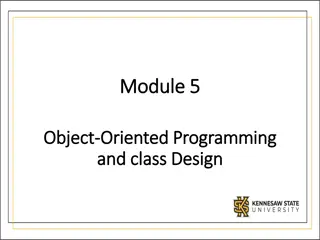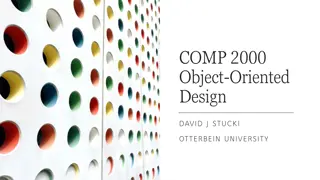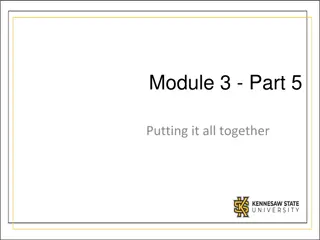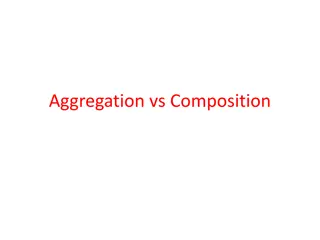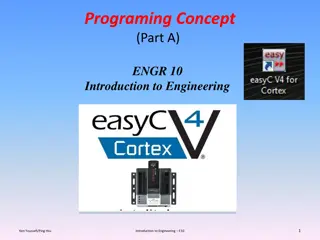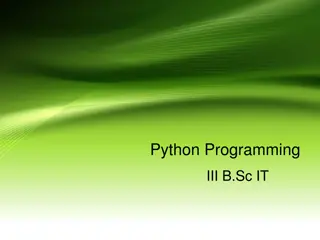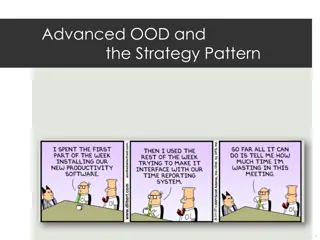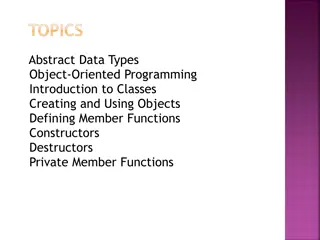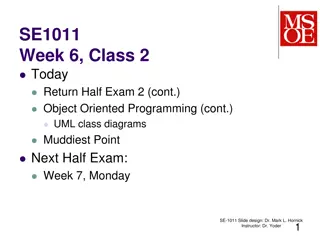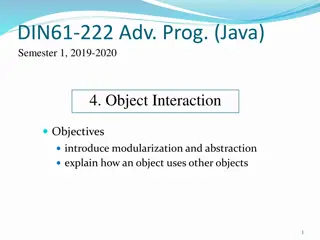Understanding Object Oriented Programming (OOP) Principles
Object-Oriented Programming (OOP) is a software design approach where programmers define data structures and operations. Key principles include objects, classes, data encapsulation, inheritance, polymorphism, and data abstraction. OOP allows for better organization and reusability of code, fostering modular and efficient programming practices.
Download Presentation

Please find below an Image/Link to download the presentation.
The content on the website is provided AS IS for your information and personal use only. It may not be sold, licensed, or shared on other websites without obtaining consent from the author. Download presentation by click this link. If you encounter any issues during the download, it is possible that the publisher has removed the file from their server.
E N D
Presentation Transcript
INTRODUCTION TO OBJECT ORIENTED PROGRAMMING Presented By, Ms.M.Jancypriya, Asst. Prof., Dept. of CA, Bon Secours College for Women, Thanjavur.
OOP Object-oriented programming (OOP) refers to a type of computer programming (software design) in which programmers define not only the data type of a data structure, but also the types of operations (functions) that can be applied to the data structure Examples of OOP languages include Java, C++ and Smalltalk.
Principles of OOP Objects Classes Data abstraction and encapsulation Inheritance Polymorphism Dynamic binding Message passing
Objects The basic run time entities in object oriented system. It represent a person, a place, a bank account or any item that the program has to handle.Student Object: Student Total DATA Name DOB Marks Average FUNCTIONS Total Average Display
Classes The entire set of data and code of an object can be made of user defined data types with the help of class. Once class has been defined we can create number of object belongs to that class. A class is a collection of object of similar data type. Example: Fruit mango;
Data Encapsulation The wrapping up of data and functions into a single unit (called Class) is known as encapsulation. Only access those functions which are wrapped in the class. The insulation of the data from direct access by the program is called data hiding and information hiding.
Data Abstraction It represents essential features without including the background details or explanations. It defined as a list of abstract attributes. Its sometime called data member because it holds information. This functions are called as methods or member functions. Abstraction is known as Abstract Data Type(ADT)
Inheritance Inheritance is the process by which objects of one class acquire the properties of objects of another class. It supports the concept of hierarchical classification. Bird Flying bird Robin
Polymorphism An operation may exhibit different behaviors in different instances. The behavior depends upon the types of data used in the operation. Polymorphism, a greek term means ability to take more than one form. To be continued
Operator overloading & Function overloading The process of making an operator to exhibit different behaviors in different instances is known a operator overloading. Example: two numbers operation sum A single function name to perform different types of tasks is known as function overloading.
Dynamic Binding Binding refers to the linking of a procedure call to the code to be executed in response to the call. Dynamic binding (also known as late binding) means that the code associated with a given procedure call is not known until the time of the call at run-time. It is associated with polymorphism and inheritance.
Message passing An object- oriented program consists of a set of objects that communicate with each other. Creating classes that define objects and their behavior Creating objects from class definitions Establishing communication among objects
Benefits of OOPs Eliminate redundant code and extend the use of exiting classes. The principle of data hiding helps the programmer to build secure programs It is easy to partition the work in a project based on objects. Object oriented systems can be easily upgraded from small to large systems. Software complexity can be easily managed.
Applications of OOPs Real-time systems Simulation and modeling Object oriented databases Hypertext, hypermedia and expertext AI and expert systems Neural networks and parallel programming Decision support and office automation systems CIM/CAM/CAD systems


